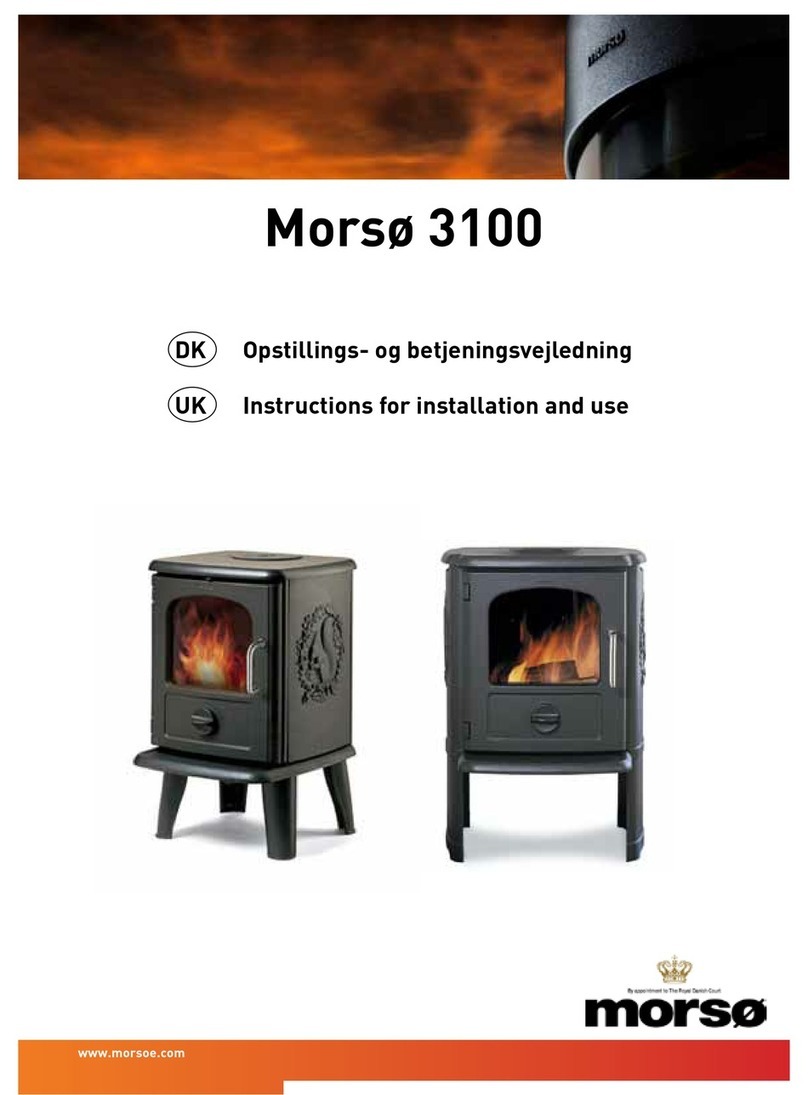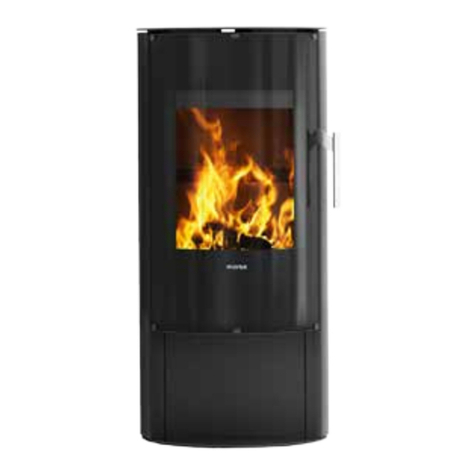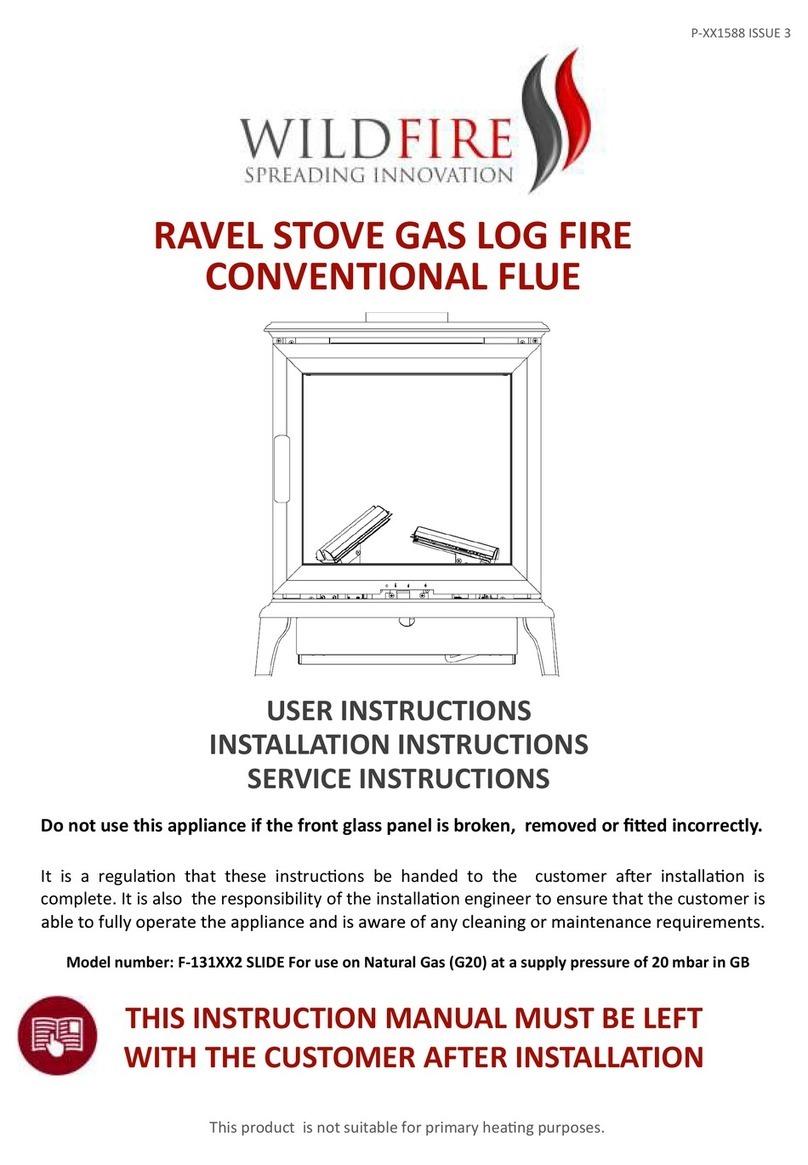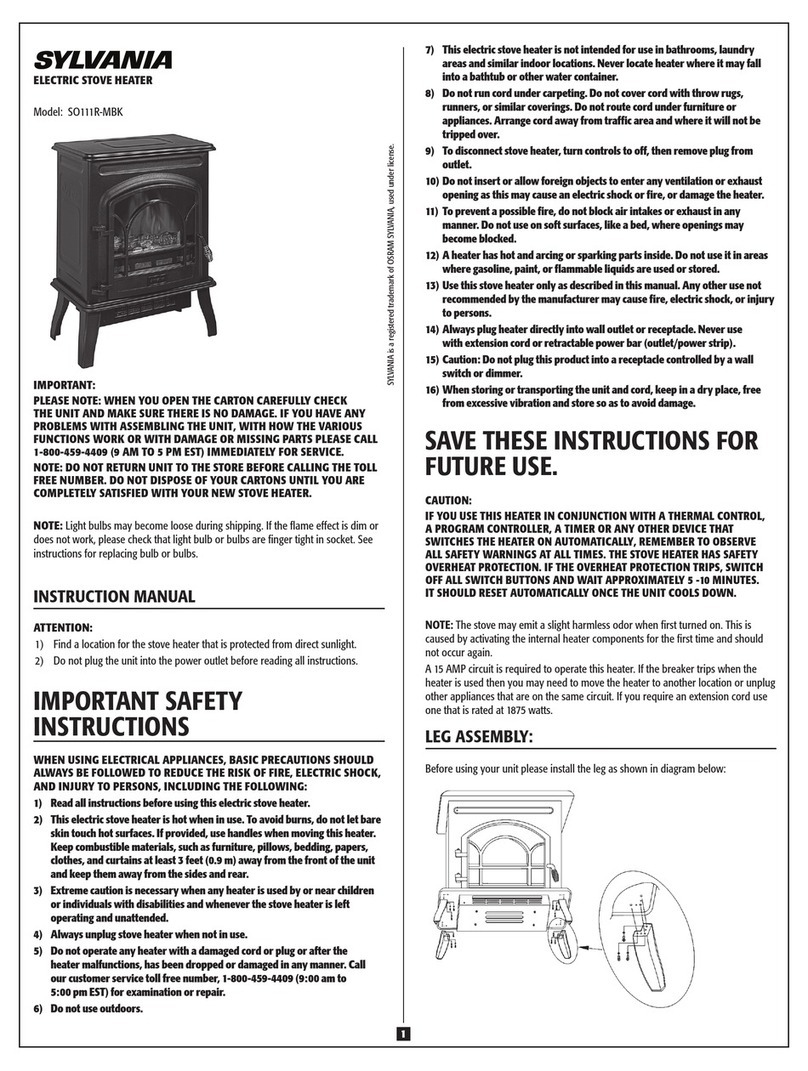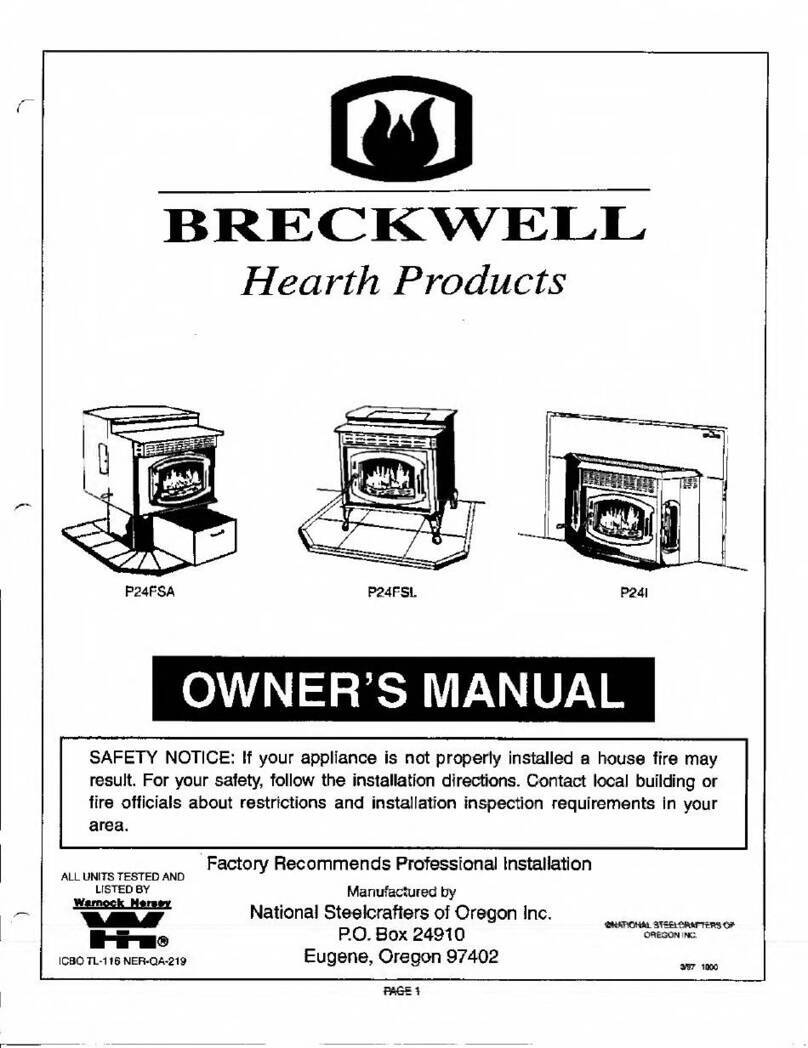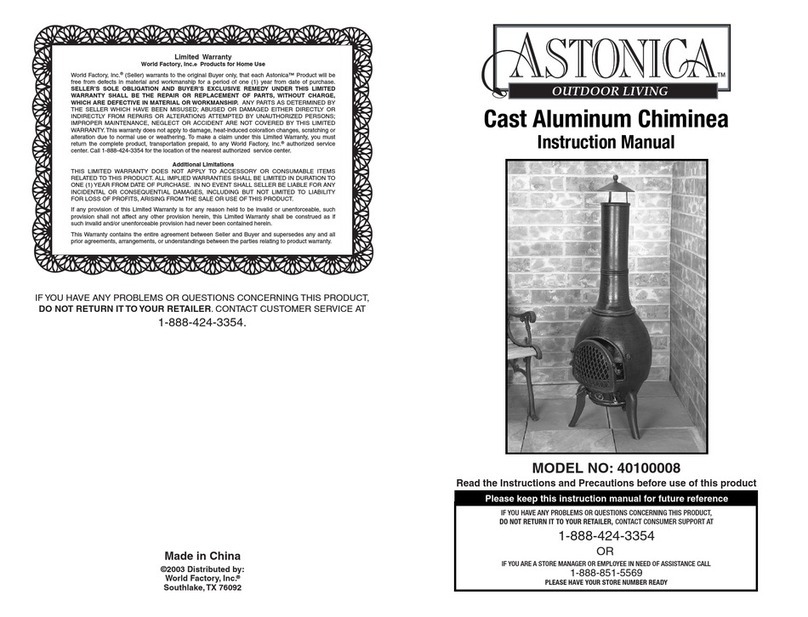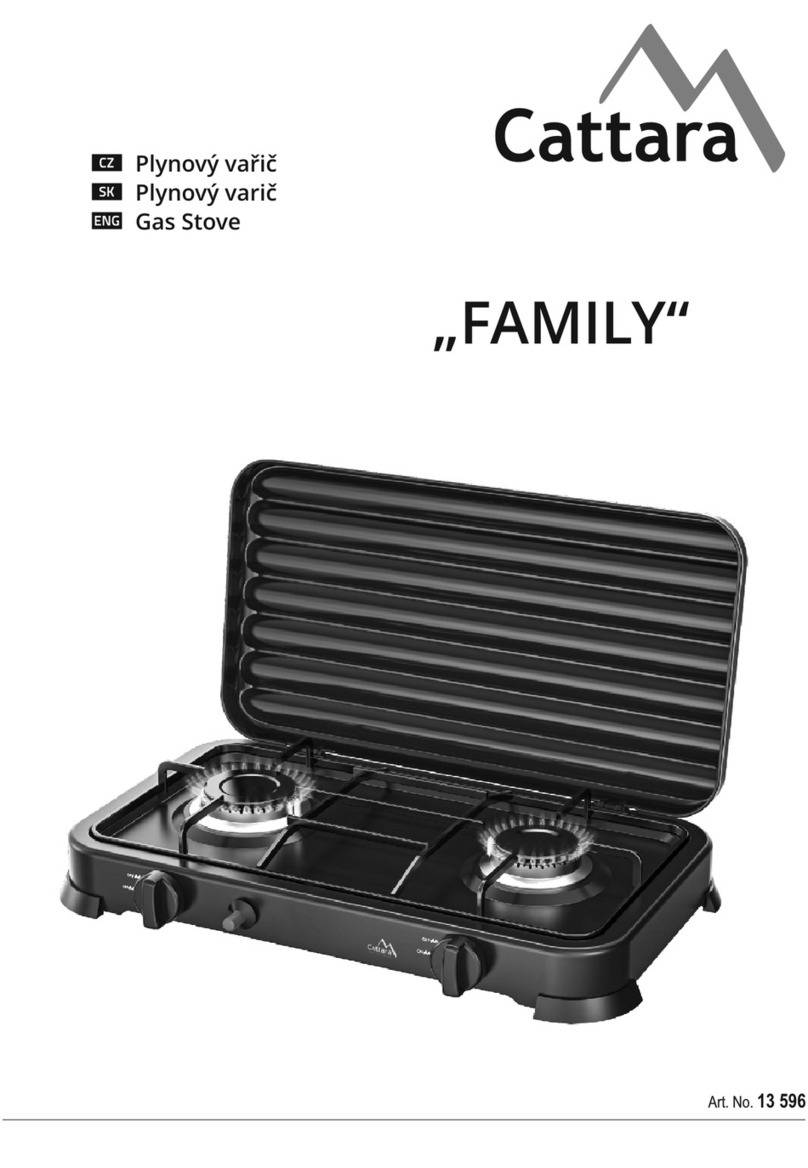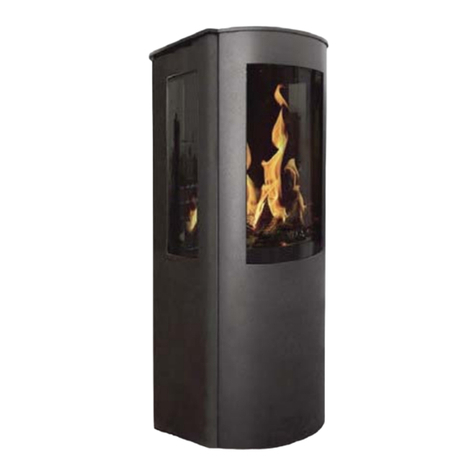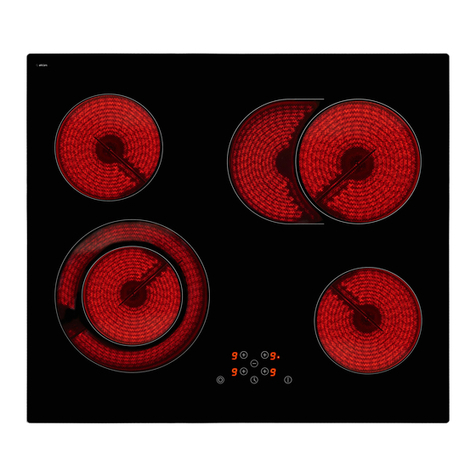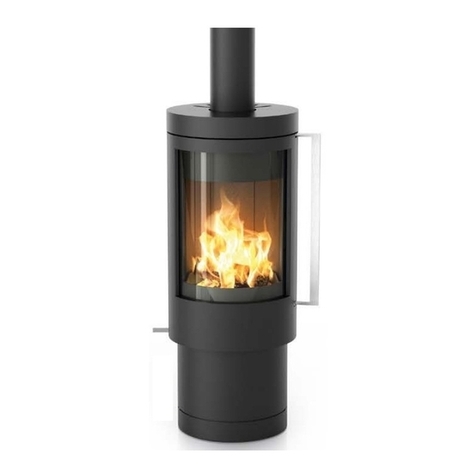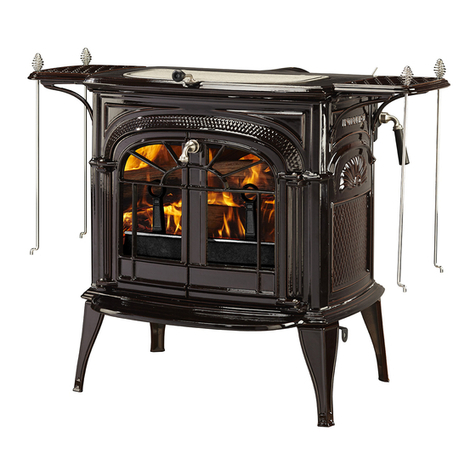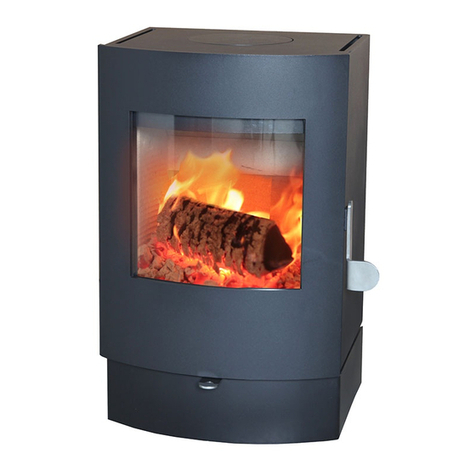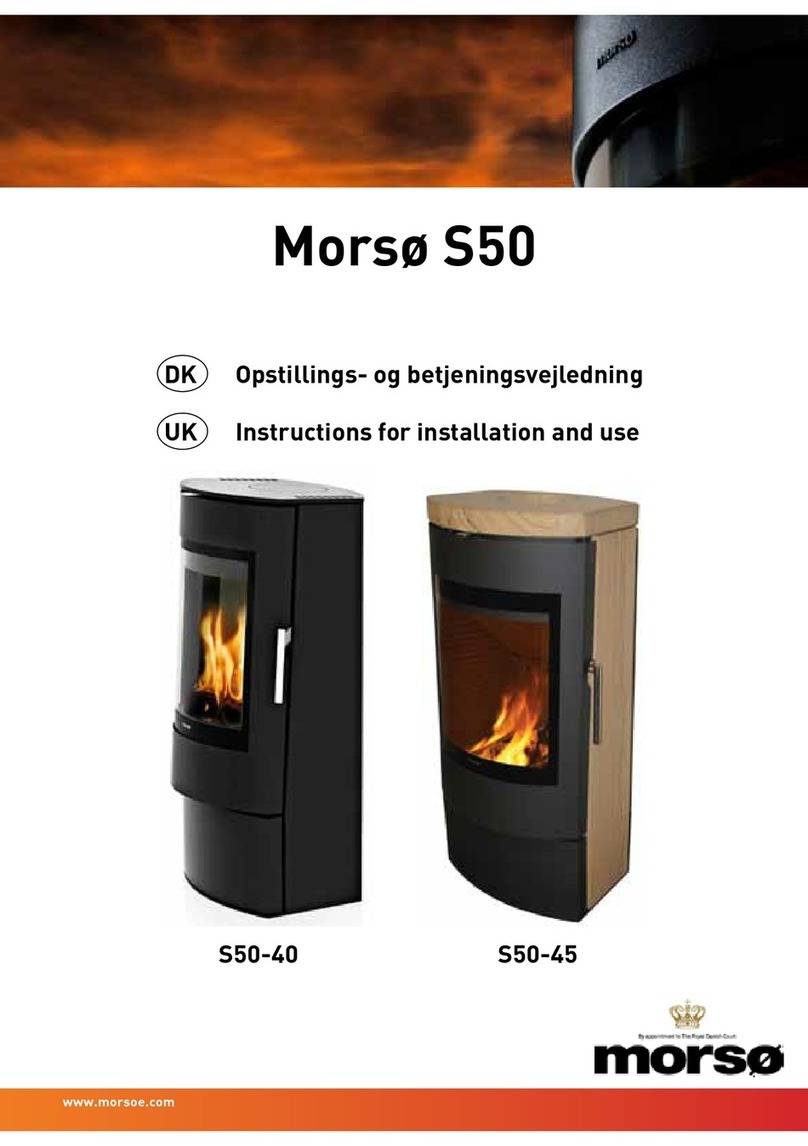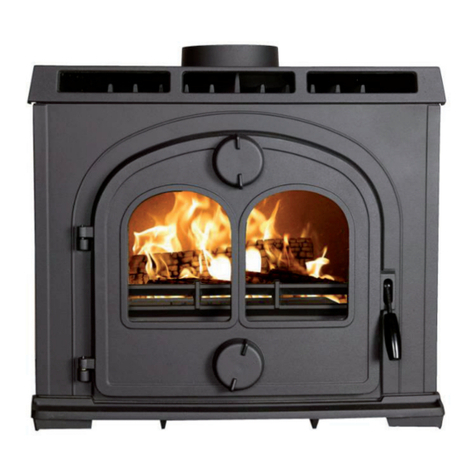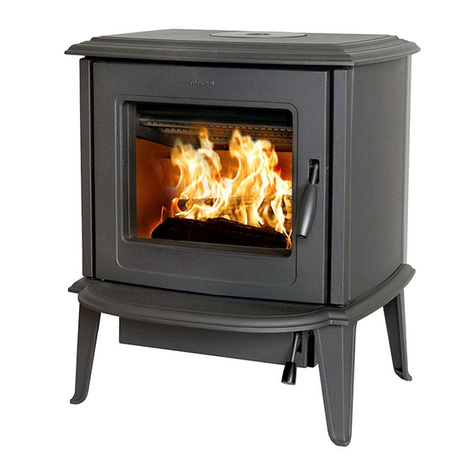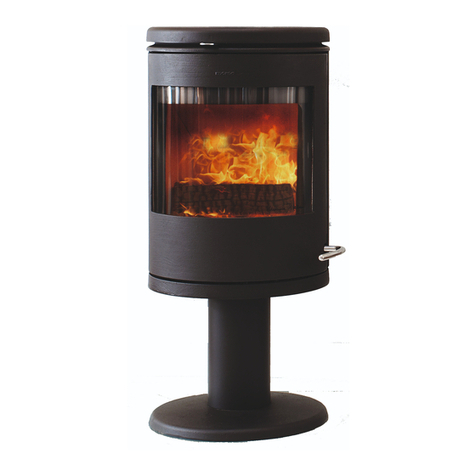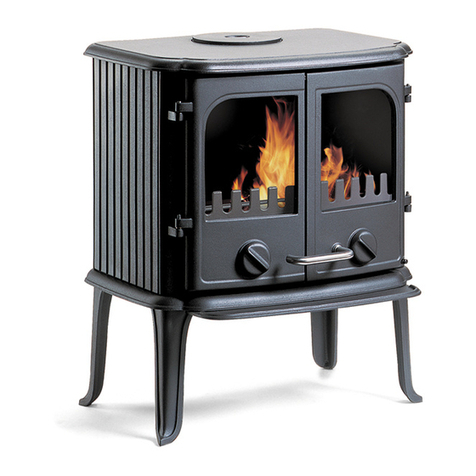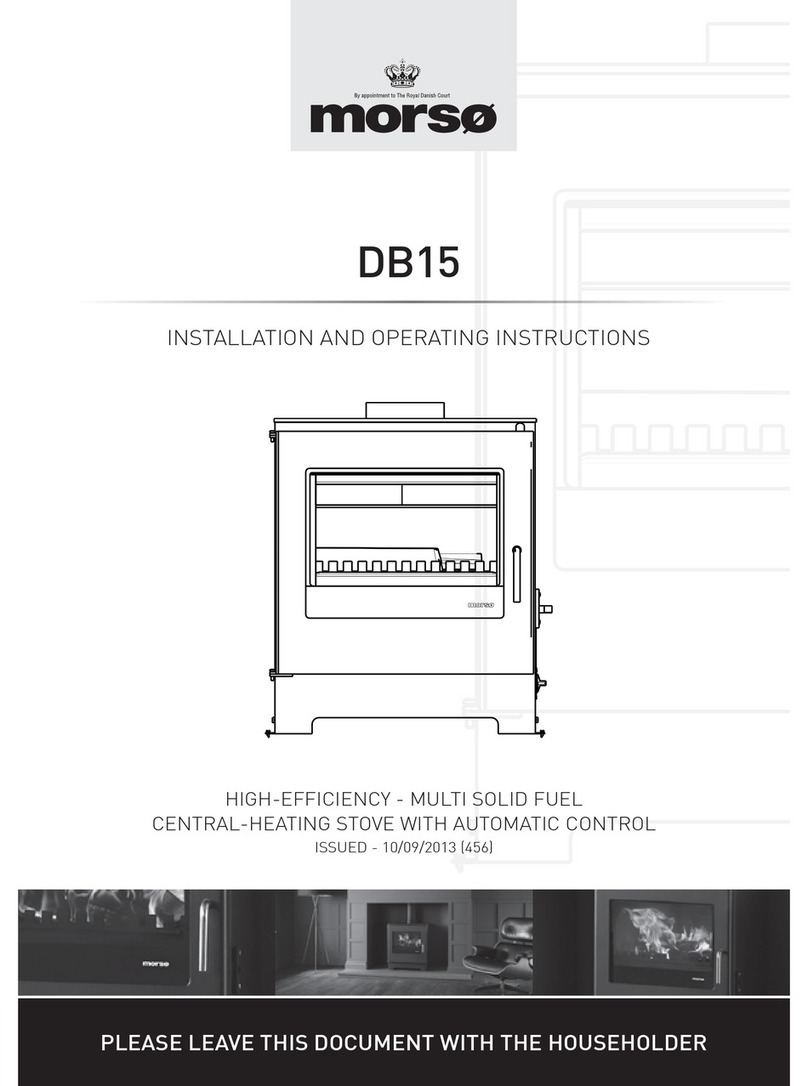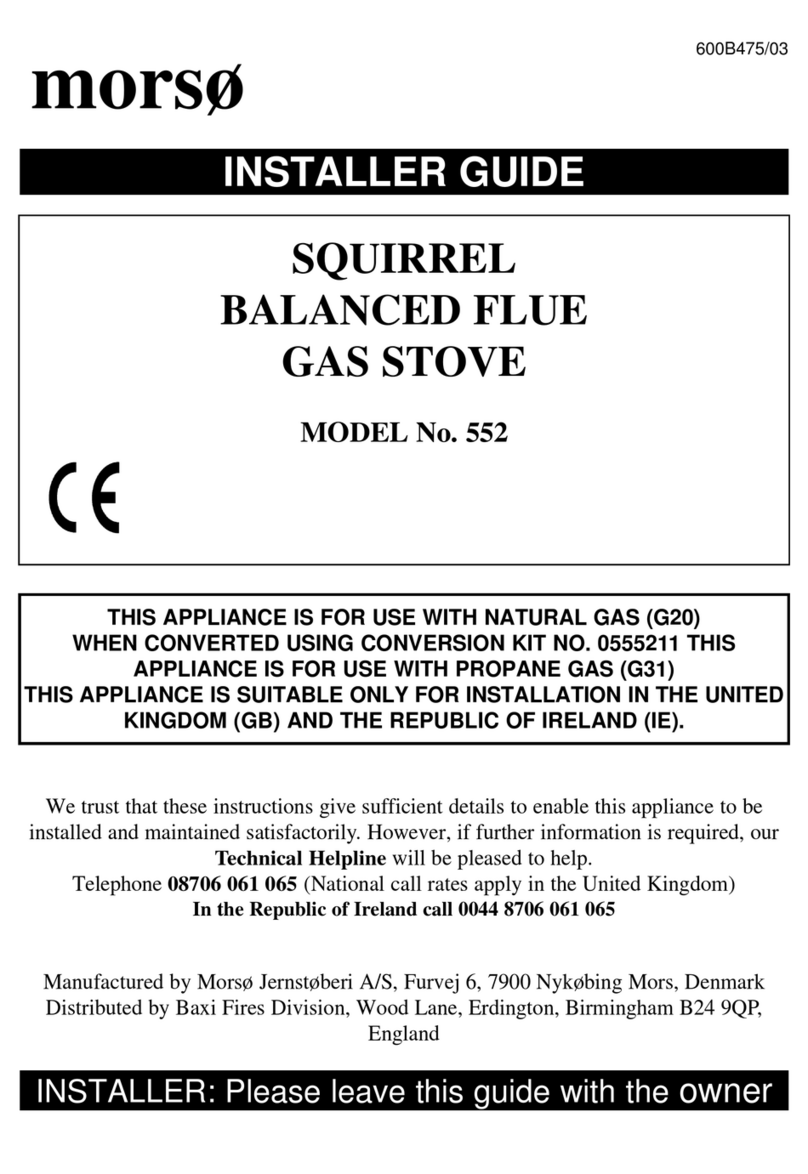CHECK REFERENCE PRESSURE
The burner aeration is non-adjustable. The appliance is pre-set to give the
correct heat input on Natural Gas at 20 mbar (8in w.g) inlet pressure and no
further adjustment is necessary. The burner pressure should be checked at the
pressure test point located at the side of the control unit (See figure 9) . The
pressure check should be carried out using a calibrated pressure gauge after
removing the test point screw. The fire should be alight and the left hand
control knob at its fully anticlockwise setting (Maximum flame height). The
pressure setting should be within the limits shown on page 2 of this manual
(Appliance data). After checking the pressure, turn off the fire, remove the
pressure gauge and replace the pressure test sealing screw. Relight the fire and
test all gas joints for soundness using a suitable leak detection fluid.
CHECK FOR SPILLAGE
A spillage check must be made before leaving the installed appliance with the
customer. Make this with all the ceramic coals in position.
1. Close all doors and windows in the room containing the appliance.
2. Light the appliance and turn the flame-height control to the maximum position.
3. Leave the appliance on for 5 minutes.
4. Hold a lighted smoke match close to the draught diverter outlet at the back of the
stove. See figure 10.
5. The installation is satisfactory if the smoke is drawn into the appliance.
6. If the smoke is not drawn into the appliance, leave the appliance alight at the
maximum setting for a further ten minutes and then repeat the test.
7. If the smoke is still not drawn into the appliance, turn off the appliance and allow to
cool. Check the flue installation and clearance of the draught diverter from the rear surface. If no solution can be found, turn off the
appliance and disconnect it. Advise the customer of the problem and stress that the appliance must not be used until the
problem is solved. If necessary seek expert advice.
8. If the above test is satisfactory, open all internal connecting doors, hatches, etc. in the room. Keep all doors and windows that open to
the outside of the building closed. Switch on any extractor fan installed in the same room as the appliance or a connecting room. Open
all doors and other openings between the fan and the appliance. Recheck for spillage as above. The installation is satisfactory if the
smoke is drawn into the appliance. If the test is not satisfactory, turn off the appliance and disconnect it. Advise the customer of
the problem and stress that the appliance must not be used until the problem is solved.
FINAL REVIEW & CUSTOMER BRIEFING
•Visually inspect the appliance. Clean off any marks incurred during installation.
•Advise the customer how to operate the appliance. Advise the customer that they should read their Owner’s guide before operating the
fire and always follow the advice in the section headed “Cleaning”.
•Advise the customer that the top, front, sides and back of the appliance are working surfaces and become very hot during use and,
therefore care should be exercised, particularly with the young, elderly or infirm.
•Explain to the customer that the appliance has a flame failure & spillage monitoring system. Point out the explanation of this system
shown in the user's instructions under “Operating the fire”. Advise that if the fire goes out for any reason wait at least three minutes
before relighting. Stress that if the monitoring system repeatedly shuts off the fire, the appliance should be switched off and a
specialist should be consulted.
•Advise the customer that the windows can be opened for cleaning the interior by using the special key supplied. Stress that the
window locking screw should be refitted afterwards to prevent inadvertent opening when the stove is alight.
•Stress that no extra coals must be added over and above those supplied with the appliance and that any replacements must
only be the authorised spares. Warn that ignoring this advice could cause incomplete clearance of the products of combustion
with consequent health hazards.
•Hand these instructions, the owner’s guide and the window key to the customer.
•Recommend that the appliance should be serviced and the flue checked by a competent person (In the UK preferably a CORGI
registered person) at least annually. If the appliance is in premises in the United Kingdom occupied by a tenant, point out that by law
a landlord must have any gas appliance, flue and pipework which is situated in a tenant’s premises checked for safety at least every
12 months
SERVICING
•Always turn off the gas supply before commencing any servicing
•This product uses fuel effect pieces, burner compartment walls and gaskets containing Refractory Ceramic Fibres (RCF), which
are man-made vitreous silicate fibres. Excessive exposure to these materials may cause temporary irritation to eyes, skin and
respiratory tract. Consequently, it makes sense to take care when handling these articles to ensure that the release of dust is kept to
a minimum. To ensure that the release of fibres from these RCF articles is kept to a minimum, during installation and servicing
we recommend that you use a HEPA filtered vacuum to remove any dust and soot accumulated in and around the fire before and
after working on the fire. When replacing these articles we recommend that the replaced items are not broken up, but are sealed
within a heavy duty polythene bag, clearly labelled as RCF waste. This is not classified as “hazardous waste” and may be disposed
of at a tipping site licensed for the disposal of industrial waste. Protective clothing is not required when handling these articles, but
we recommend you follow the normal hygiene rules of not smoking, eating or drinking in the work area and always wash your
hands before eating or drinking.
•Check that the appliance is clean and that no matter is blocking the burner or pilot which may cause imperfect flames or prevent a
correct electrode spark.
•After servicing, make sure that the ceramic walls and fuel effect pieces are replaced correctly as described in the installation
instructions. Make sure that the window locking screw is in place.
•Always test for gas soundness after servicing the appliance.





